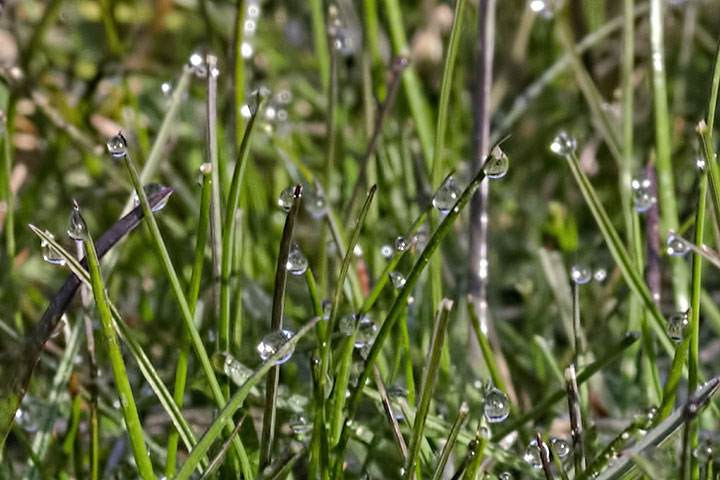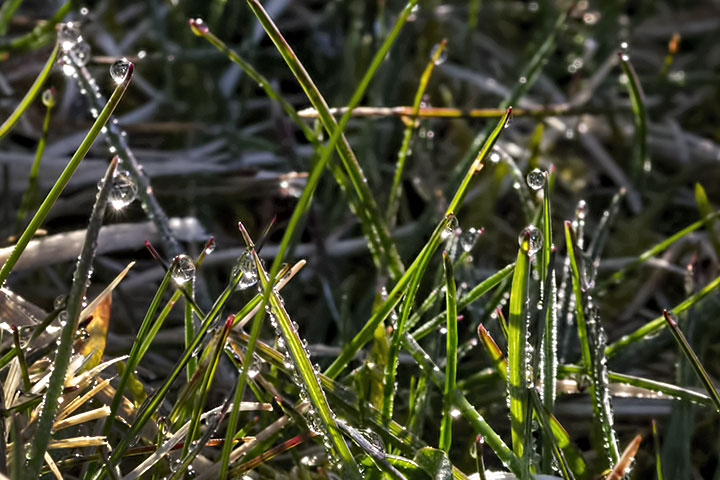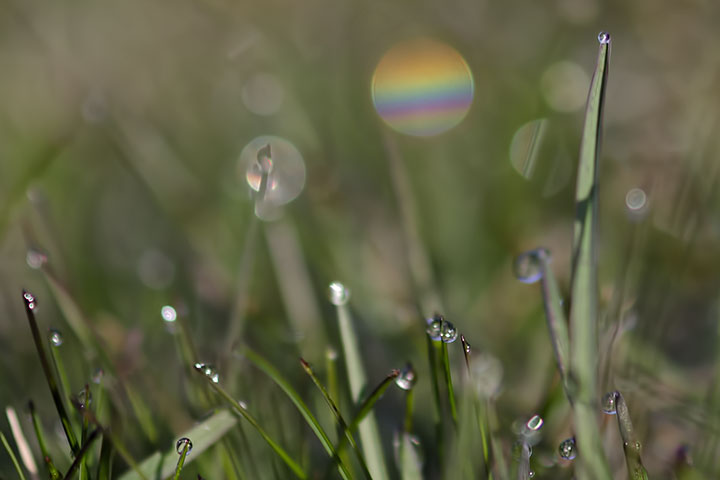There is nothing that says spring like the first guttation—not the arrival of swans, swallows, or robins, but guttation. It tells me that local plant metabolism is underway.
Guttation is often confused with dew. Although superficially similar in appearance, dew and guttation come about in different ways and are easily distinguishable. There are examples of each below.
Guttation on grass appears as rather large drops of water hanging from the tip of the blade (although sometimes a drop may slide downwards). It is formed from soil moisture that the roots have pumped upwards. During the day, this moisture would have passed out through the stomates, but with the lower nighttime temperatures, the stomates have closed. Frankly, grass is not very smart and so the roots keep pumping despite the blade having closed down for the night. The water is thus extruded from the tip of the blade to produce the guttation (from Latin, gutta meaning drop + ation).
The source of the moisture for dew is not the ground, but the atmosphere. Water vapour condenses on the cold blade. The grass (or any plant) need not be metabolizing for dew to form. Indeed, dew will form on all manner of cold surfaces. Guttation, on the other hand requires the plant to be metabolizing, making it a good sign that spring is here.
(Incidentally, one sometimes sees a picture of a spider’s web covered with droplets which the photographer has labeled as dew. Alas, those drops are formed neither as dew nor guttation, but something else.)
Nearly spherical guttation drops are hanging from the tips of the metabolizing grass.

Guttation and dew can form separately or together. The large pendulous drops near the tips of these blades are guttation; the smaller ones along the blades are dew.

The previous pictures were taken in the general direction of the Sun to attain a high contrast. There are delights to be seen in the other direction: rainbows. Typically only formed by the more nearly spherical guttation drops, the tiny portions of a rainbow are easiest to see when the drop is out of focus.


Love the rainbow picture and thanks for telling us about this. But now I want to know what is on the spider web.
Heather, I hadn’t elaborated on the point as I had no timely picture to discuss. It is still too early for spider webs and even the condition needed to add the drops was lacking this morning. However, the drops on such webs are collected from a fog drifting by. As the fog drifts through the web, some droplets collide with the threads and remain. This is a very different mechanism than ones that produce either dew or guttation.
Thanks. I love spider webs like that (but not spiders so much). There’s a field near me that in fall is filled with webs all glittering in the early morning light.